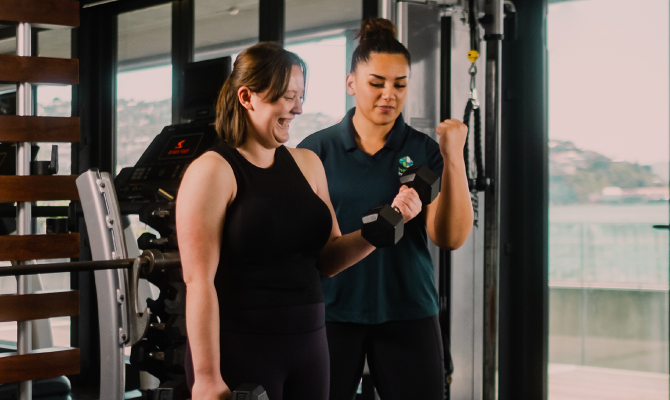How To Safely Exercise After Injury
22 Oct 2020
22 Dec 2022

Traditionally, much of the research about exercise - especially endurance training - is mostly focused on the male body. To be frank, this is unhelpful for women and people who get their period, because during the menstrual cycle, hormone levels fluctuate, and it’s important to factor this into how you train. Knowing your menstruation cycle can help you get the most out of your training.
Habit Health physiotherapist, and endurance exercise enthusiast Katy Relph shares the basics on training over the menstrual cycle.
I’m a runner, and for the most part I really try to train harder during my follicular phase, and I don’t do any heavy lifting in my luteal phase. I’ve really noticed a difference. When I was training for an ultra marathon I ended up putting my body under such stress that I started to lose my period, and I was really tired. I started looking into how we can work with our periods, and to train and fuel our bodies. It meant I was doing my big training runs better, but doing them less.
During the luteal phase, hormone levels are at their highest and recovery takes longer. This phase begins around day 15 of a 28-day cycle – so about half way – and ends when you get your period.
During this phase, it’s good to focus on stretching, and doing low aerobic exercises like pilates, yoga, walks and swimming. It’s also a good time to increase your intake of fats and protein because these help aid recovery. During the luteal phase, the body doesn’t feel as thirsty, but always remember, it’s important to sip on water, especially during training, because the core body temperature is higher in this phase.
The follicular phase of the menstrual cycle is from the first day of bleeding, through to ovulation, which takes a few days. It can be surprising to learn that the follicular phase can be the best time for high intensity exercise like HIIT classes, running, sprints, and lifting heavier weights. In this phase, you won’t need as much rest and recovery from exercise, and your body will be better at processing carbohydrates. Training during this time is different from person to person though - fatigue and PMS symptoms can be more present for some, so it’s important to check in with your body and find a balance.
Having an event in the luteal phase doesn’t mean you can’t perform. There are things you can do to manage symptoms like eating enough carbohydrates and protein, keeping hydrated and resting where you can.
It’s got to be that you can’t train hard while on your period. This differs from person to person, but there are ways you can use your menstrual cycle to get the most from your training. It can be the best indication for getting the most out of your training.
Don’t train fasted (without eating). Even if you eat a boiled egg, protein shake or toast before your workout, it will help with the stress hormone response. For women our cortisol can go out of whack which means we can feel fatigued if we aren’t fuelling. If you’re under-fuelling and over training there is a risk of losing your period and developing injuries easier. This can also slow down your running times. Taking in carbohydrates, proteins and fats will help you train smarter.